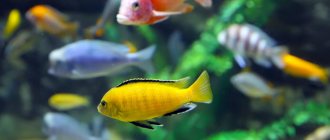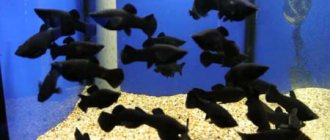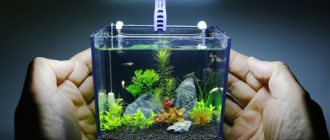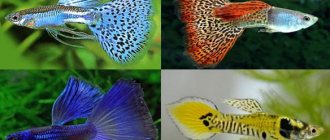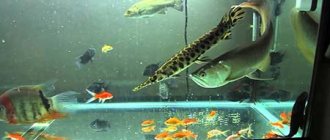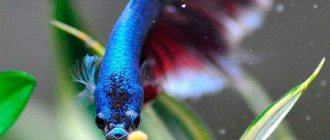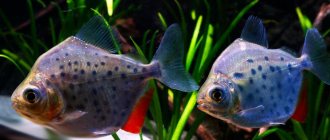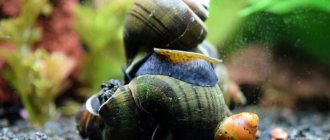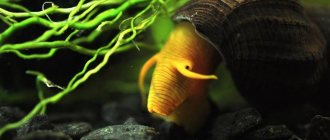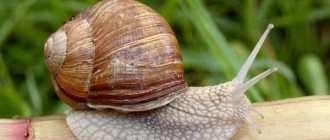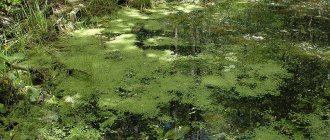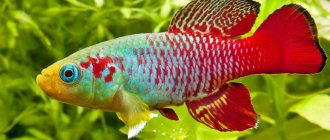A home aquarium is a cozy corner where the water gurgles quietly and its graceful inhabitants swim slowly. Many people dreamed of raising fish as children, when they went on an excursion to a pet store. But when the hobby develops into something more, a person begins to be interested in the characteristics of underwater inhabitants, and select individuals that are suitable for each other in temperament and appearance. This is necessary so that the fish do not injure each other, and also look beautiful and complement each other. Today we’ll talk about the features of the most unpretentious and colorful pets, which are most often chosen by beginners. These are red aquarium fish.
For a small aquarium
If the dimensions of the container leave much to be desired, you will have to choose inhabitants who will be comfortable in it. For example, platy. These are gorgeous red aquarium fish, the length of which is only 10 cm. Young individuals are correspondingly smaller. Their body color is rich, the lower fins are blue. To keep them bright, you need to feed them food with carotenoids.
Red aquarium fish, platies, are distinguished by their active and peaceful behavior. They are very easy-going and will easily complement almost any collection. They prefer to swim in a small flock. In a community aquarium, they can produce offspring from guppies, mollies and swordtails. Therefore, if you are considering the possibility of breeding and selling offspring, it is best to separate the underwater inhabitants.
General information
Rhodostomus, or red-nosed tetra (Hemigrammus rhodostomus) is a small fish from the Characin family, which is very often a resident of aquascapes. Creators of underwater landscapes choose this tetra because of its specific color. The body of the fish is gray, the tail is striped, and there is a bright red spot on the head. On the one hand, a flock of Rhodostomus looks very interesting, on the other hand, it does not distract attention from contemplating the herbalist. At the same time, the fish will not cause damage to living plants.
Red-nosed tetras have a friendly nature and will make good neighbors for many other species.
Neons
Another popular and very interesting aquarium fish. Red, blue, black, green - they come in a variety of shades, but they are all distinguished by a neon stripe on the back. These are bright and unpretentious pets. School creatures cannot stand loneliness, live in small groups of 10-15 and feel very comfortable in such an environment. It’s a pleasure to watch them swim gracefully, sometimes forming intricate figures.
Red neon is a small aquarium fish with a red lower part of the body, the body length reaches 3 cm, no more. Females are fuller than males, and the edge of their anal fin is concave. It is necessary to keep it in an aquarium with warm water, at a temperature of 24 to 27 degrees. Compatible with small tetras.
Compatibility
The red cap goldfish is a peaceful and schooling species. Therefore, it is well compatible with all representatives of Goldfish, calm or neutral species that do not pay attention to goldfish.
View this post on Instagram
Posted by Aquarium and Pet Supplies (@_kamidog_) Feb 21, 2018 at 4:39 am PST
Compatible Types:
- Danio Rerio.
- Shubunkin.
- Guppy.
- Telescope.
- Comet.
- All types of catfish.
- Ternetia.
- Cardinal.
Low compatibility with large and territorial fish that show aggression. I still can’t stand being in the vicinity of nimble and active fish, which will bully calm red caps and spoil and tear off long fins. Too miniature species are also not suitable - they will be quickly eaten.
Incompatible types:
- Barbus.
- Discus.
- Sword bearer.
- Cockerels.
- Neons.
- Mollies.
- Fry of small fish species.
Gourami
The name of the red aquarium fish means “cheerful” or “cheerful.” These are truly very active creatures, which are a pleasure to watch. Honey red gourami is an attractive color variety. The maximum length of the fish is 5 centimeters. The scales are small and bright. The dorsal fins are transparent, and the pectoral fins are thread-like. Can be kept in a common aquarium with calm representatives of the underwater world. They are active, but rather shy. There must be enough algae in the tank so that the fish can hide.
These creatures have a hard time withstanding open space, preferring secluded places. They prefer dim lighting, which can be obtained from floating plants and dark soil. Permissible temperature for keeping: +24…+27 °C. The air in the room should be similar, because gourami periodically swim to the surface to grab a portion.
Fire barb
Sometimes even the owners themselves find it difficult to answer what the red aquarium fish that live with them are called. This suggests that the choice of the inhabitants was made spontaneously, or the person simply trusted the experience of the consultant from the store. One way or another, barbs are found in almost every second aquarium. These are representatives of the carp family. They are schooling fish; it is best to keep them in groups of 5-6 individuals, i.e. in small schools. Males often come into conflict by showing each other their fins. Therefore, barbs cannot be housed with long-tailed, slow-moving fish. This is a direct challenge for them.
Reviews
This is a hardy, fast fish. It is distinguished by a round, round body and, of course, an incredible hat. Prefers to be the only one in the aquarium. Anna
Oranda is omnivorous and does not require special care. Therefore, a school of these unpretentious fish were the first to start living in my aquarium. I did not find any shortcomings in these fish. Sasssha88
Oranda fish are very beautiful and, with good care, have a long life. However, as an aquarist with many years of experience, I note that some types of orandas are difficult to obtain. It happens that orandas often get sick. But despite this, I have been working with orandas for a long time. It is the golden orandas that are my best choice. Igor Nikolaevich, Voronezh
sword bearer
This is one of the most sought after breeds. It’s not for nothing that swordtails are always available in any pet store. Often these are the ones recommended by a consultant to those who are starting an aquarium for the first time. Unpretentious and bright, they will allow you to study this difficult science without serious losses. After all, the death of a pet is perceived by many as a real tragedy.
Selected fish have very bright colors, much more interesting than their counterparts in the wild. The name of these creatures comes from the long outgrowth on the lower fin. It looks a bit like a sword. Body size is 10-12 cm, and females are usually larger than their partners. It is not recommended to keep them in pairs, otherwise the male will tire his partner with his courtship. The ideal option would be 3-4 females and 1 male. But letting in a second leader is dangerous, because they will constantly find out who is in charge here.
You can feed your pets with special mixtures. It is desirable that plant components predominate in them. In nature, they feed on algae, so meat feed will put too much stress on the digestive organs. In addition, the fish may start nibbling on the plants, which is not very good. But you can feed them with frozen food. These are very active fish, so you shouldn’t buy a large school at once. There should be at least 35 liters of water per pet. Diseases often break out in an overcrowded aquarium.
Ornathus
These are another popular red fish. Small and unpretentious, they can be ideal pets for a novice aquarist. Freshwater inhabitants of South American rivers have a small body, up to 4.5 cm in length. There is a dark spot near the operculum. During spawning, the male's body acquires a rich scarlet color. These are peaceful creatures that easily get along with other aquatic inhabitants. Of course, you need to choose relatively small individuals. Ornathuses make an excellent duet with neons.
Appearance
Outwardly not very attractive. The body is elongated, translucent silver in color with a greenish tint. The head is red. The caudal fin is colored with black and white stripes. The color saturation depends on external conditions. When stressed or conditions deteriorate, the head of Rhodostomus becomes pale red.
If conditions are right, the head is ruby red. So color is an excellent indicator of the condition of the fish and the quality of its conditions, warning the aquarist about possible problems. Body length is about 5 centimeters.
For large aquariums
If you have a fairly spacious aquarium, you might consider stocking it with appropriate fish. After all, watching them is a pleasure. Graceful movements, streamlined shapes, individual characteristics and even character - all this is inherent in underwater inhabitants. It’s just that in large individuals all these charms can be seen more clearly.
Cichlid (red parrot) is one of the most popular representatives of the aquarium world. If you want to get hooked on this hobby forever, it's time to buy a couple of these fish. Large creatures are distinguished not only by their bright colors, but also by their endurance and pronounced intelligence. They recognize their owner and get used to taking food from their hands. You can even play with them.
Looking at photos of red aquarium fish with names, you will probably pay attention to cichlids. Red-orange, 20-24 cm long, they look especially good in pairs. Therefore, if the size of the aqua allows, be sure to take several. The lifespan of pets is more than 10 years, that is, they are loved for many years. For a rich color of the scales, the parrot needs to be given food with carotenoids and proteins.
Hemichromis red
This is another variety of the family described above. Large individuals that are found naturally in the southwest of Zaire. The body of Hemichromis is oblong, flattened on the sides. The forehead is steep, the lips are thick. Shiny dots are scattered across the scales. It is they that give the fish a resemblance to a Christmas tree toy and make it especially attractive. There are bluish spots behind the gill covers. Males are larger than females, usually growing up to 15 cm. In captivity they live up to 10 years.
The fish are unpretentious and can easily tolerate minor temperature fluctuations. The optimal indicators for them will be +23 °C, but they are grown quite successfully in the range of +18...+28 °C. They eat all types of food with appetite. An animal-eating species, therefore dry mixtures must have a high protein content. Overfeeding should be avoided.
Red Asian Arowana
This is a spectacular aquarium fish with a red tail. It is not easy to find on sale, and the cost of each individual is usually so high that not everyone can afford to purchase an exotic pet. Because of this, it is considered a kind of good luck talisman. Elite fish often reach a meter in length; they need a spacious aquarium. This amazing creature can jump out of the water; it is very important to cover the aquarium with a lid.
The body is oblong, cone-shaped. There are no teeth in the mouth; there is a pair of whiskers on the lower jaw. The fish simply swallows its prey, which is sometimes quite large, and is considered aggressive and territorial. It should be kept separately or with larger individuals. Capable of showing aggression towards relatives. The content of this creature also has its advantages. The fish lives for a very long time, up to 50 years. She is unpretentious to the conditions and adapts to any food, usually recognizes the owner and takes treats from his hands.
Description and features of caramel thorn
Wonderful fish originally from Brazilian reservoirs first appeared in Europe in the 30s of the last century, and were brought to Russia in 1946. Now thorns are so common that they can be found in every pet store.
Caramels are the undisputed favorites for attracting the attention of buyers, although new technologies for coloring fish are not welcomed by everyone. In Europe, due to protest sentiments, they do not buy such inhabitants for their aquariums.
Ternetia albino
Multicolor ternetias, as they are also called, pay for their striking appearance with compromised health. They really require more attention than their naturally colored counterparts. Owners need to remember that the pigment of bright individuals is not passed on to their heirs.
The chemical effect of the dye may weaken over time, then the outfit becomes dull and loses its expressiveness. The color fades not only in painted individuals, but also in ordinary representatives of thorns. Among the reasons are various fish diseases and stressful situations.
In nature, the thorn fish lives in local rivers of South America, but colored specimens are supplied mainly from special breeding farms in Vietnam. A long journey often affects the condition of fish susceptible to disease.
Artificially colored common thorns
After purchasing, a flock of beauties should be kept in quarantine in a separate container, only then moved to a common aquarium. If no signs of illness appear in two weeks, then the fish will delight their owners for a long time.
Ternetia is distinguished by a tall and flat diamond-shaped body. The length of the fish reaches 5.5-6 cm. An individual is ready for spawning when its size is at least 3 cm. The characteristic external features of the ternation are a pair of vertical dark stripes along the body and large fins.
Anal looks like an elegant skirt. Thanks to this remarkable part of the body, from the abdomen to the tail, the thorn cannot be confused with other inhabitants of the aquarium. The dorsal fin, narrow and high, proudly points upward. A small adipose fin is located at the tail.
Ternetia Glofish pink
Large eyes are set on the sides, the lower jaw is slightly pushed forward. The popularity of caramel fish is associated not only with its elegant color, but also with other advantages of keeping it:
- peaceful nature of the inhabitants;
- ease of reproduction;
- activity and mobility;
- accessibility of maintenance for beginner aquarists.
Small schools of fish look very impressive, evoke positive emotions, the bright outfit of the inhabitants lifts the mood, especially delights children.
Labeo
A very impressive fish that is not easy to find in pet stores. Two-color beauties captivate at first sight. And if a person already has an aquarium, most likely the owner will want to immediately take such a curiosity for himself. It's better to stop and try to find out more about your potential pet. A black aquarium fish with a red tail is extremely attractive, but if you already have underwater inhabitants at home, then you should refuse the purchase.
Labeo is a solitary fish. Experts in this field note that they have never encountered aquariums where two adults or even teenagers coexisted peacefully. Fry up to two centimeters in size are usually sold at the market. Less common are grown ones, 7-10 cm long. And it’s very rare to see adult fish. A consultant selling fry usually claims that they can be kept in a small aquarium, several at a time. What happens next? As they grow up, they will begin to fight to the death for territory. These charming red and black aquarium fish should live alone, in a container with a volume of at least 100 liters.
Labeo is a natural inhabitant of bottom layers, so it is extremely undesirable for catfish to live with them at the same depth. It is better to choose the inhabitants of the upper layers as neighbors, for example neons or barbs. Then they will practically not intersect. Representatives of the family prefer plant foods, but do not refuse food of animal origin.
Diseases
Diseases in fish appear from poor water quality, constant stress or infection through low-quality feed.
- A yellow film may appear on the body - this is a sign of oodinosis. The treatment is carried out by a specialist.
- If whitish crusts appear on the scales, this indicates the development of ichthyophthyriosis . Treatment will require copper preparations and a half-volume water change.
- Fish can even be affected by tuberculosis - pelvicachromis lives motionlessly at the bottom and practically does not eat.
- Just like humans, fish can become obese if overfed. It is important to immediately notice weight gain and balance your diet.
Pelvicachromis is easy to keep. It is enough to choose the right diet, change the water sometimes and take timely measures to treat diseases.
Goldfish, or veiltail
This is a fairly popular aquarium fish with a red tail. It is an artificially bred species of freshwater inhabitants of the crucian genus. It is characterized by an elongated body, rounded or laterally compressed. They are characterized by gill covers. The color of the scales can be orange, golden or fiery red. The length of its body in an aquarium rarely exceeds 15 cm, excluding the tail. And this is a real decoration! Luxurious fins that sway in time with graceful movements, and the tail invariably attract attention. The fish feed mainly on granulated food, which is a mixture of plants. Although they do not refuse any food, they can eat all day long. These are simply features of physiology, because in nature they feed constantly.
Reproduction
Representatives become sexually mature and capable of reproduction at 1.5–2 years of age. For procreation, a female and 2–4 males are selected. If you want to get valuable and expensive fry, then choose from the flock representatives with the largest caps and long tails. If the fry are not for sale and will remain in the aquarium, then any representatives are suitable.
Set up a separate spawning area and move selected individuals into it.
Differences between a female and a male
Sexual dimorphism is weak; sex determination is difficult. Typically, males are smaller in size, and their bodies are more graceful and elongated. Females are larger and more massive. Before spawning, the color of males becomes brighter and white spots appear on the head.
Spawning
Food portions increase before spawning, and a variety of foods are introduced into the diet. To stimulate the spawning tank, lower the temperature by a couple of degrees.
Most often, the female begins to spawn in the morning at dusk. The spawning process lasts 2–4 hours. The eggs are laid on the leaves of planted plants. After spawning, the parents are placed in a common aquarium because they are able to eat the eggs.
Riukin red and white
This is a breeding form of goldfish. It is quite rare to find in stores; usually you have to look through breeders. But there are many lovers of underwater inhabitants with interesting colors, so if you want, you can find fry. Red and white aquarium fish are suitable not only for keeping at home, but also for release into decorative ponds. They prefer the company of their own kind, not suitable for living alone.
Riukin loves bright light and plenty of free space. The minimum volume per steam is 80 liters. Temperature conditions are permissible in the range of +15...+30 °C, so no problems are expected here. Food: traditional large frozen and dry mixtures, including specialized ones intended for cold-water ornamental representatives of the underwater world.
Feeding
Oranda red cap is unpretentious in its choice of food; it eats live, plant, dried and frozen food. But a significant part of the food should still consist of vegetation.
These aquarium fish have a high appetite. Develop a feeding plan in advance and stick to it daily. Feed fry and juveniles twice a day, reduce the diet of adults to 1 feeding per day.
If you do not adhere to the diet, then the fish will show a symptom of overeating - it begins to swim on its side. If you overeat, reduce the dose of food and arrange a fasting day.
Specialized industrial food for Goldfish also eats well.
Botia clown
Charming, relatively small aquarium fish, red and black. The color is striped, making these creatures slightly reminiscent of a wasp. Clowns look very impressive and get along with many inhabitants of aquariums. The peculiarity of these fish is the presence of sharp spines that extend at the moment of danger. This is not to say that clowns are overly aggressive, but they can defend themselves. These are long-livers who delight the owner with their bright appearance for up to 20 years.
Caring for them is not difficult, but you need to create certain conditions. The main thing is dim light and the presence of snags or other shelters. Clowns love to explore labyrinths and make their way through grottoes. The capacity of the aquarium must be at least 400 liters; be sure to provide it with a lid. They feel good in a flock, so you can safely buy 5-6 representatives of this species. In terms of nutrition, they are unpretentious, but if you want to see your pets healthy and happy, then you should include in your diet various feed mixtures containing meat and plant components. They can also pinch aquatic plants with soft leaves.
Bolivian butterfly
This is a real gem of the collection! A gentle, beautiful aquarium fish with red fins gets along well with its relatives, is calm and peaceful. The body length does not exceed 9 cm, which makes it possible to keep it even in a small aquarium. At the same time, the fish gets used to its owner and begins to ask him for food, causing him to be moved.
Do not forget that it is compatible with peaceful species, but in the presence of active fish it becomes shy and tries to hide in a corner. It is best to keep a flock of at least 6 individuals. Be sure to plant more green plants, as well as build other shelters and grottoes. water temperature +23…+38 °С. The butterfly accepts all types of food, but prefers frozen and live.
Frequent illnesses
Do not forget that an aquarium is a completely unique ecosystem. Launching new fish and snails, planting plants and feeding the inhabitants - all this makes its own adjustments to it. The smaller the volume, the more spontaneous the processes occurring in it are. Optimal balance is only possible in a large aquarium, and even then it can easily be disrupted by improper feeding. Some imbalances correct themselves, others grow like a snowball. This leads to the development of various diseases in underwater inhabitants or even their death. Red aquarium fish require a special diet so that their scales retain attractive shades, but it is better to talk about this with a specialist who can tell you about the characteristics of a particular breed.
As for diseases, everything is individual, you need to analyze each specific case. Often the first symptom is red spots in aquarium fish. The causes may be mechanical damage, as well as fin rot. A terrible disease that needs to be stopped as quickly as possible. The young animals die, but the adults have every chance of recovery. The first step is to change at least 30% of the water in the aquarium and raise the temperature to the maximum acceptable for its inhabitants. It is recommended to move some inhabitants that absolutely cannot tolerate high temperatures into a nursery.
If the condition does not improve, we move on to treatment with tablets. Ordinary chloramphenicol will help. One tablet is for 20 liters. You need to crush it into powder and dissolve it in a small amount of water, then pour it into the aquarium. Every three days, change 30% of the water and add a third of the total dose of the medicine. Treatment continues until the condition of the fish is completely normal.
Content
For successful development and reproduction, certain care and conditions are required. The water parameters and equipment of the aquarium are important. If the fish do not live in a favorable environment, they will live less than the allotted time.
Cleaning and care
Orandas have a reputation for slobs. In fact, they don't pollute aquariums any more than other fish species. Cleaning is carried out infrequently - once every 2-4 weeks. The idea of sloppiness arose from the gluttony of goldfish.
Approximately 30% of the water in the aquarium needs to be changed weekly. It must be clean and at the appropriate temperature.
Aquarium
The volume of the aquarium for one red cap is at least 50 liters. A small school of 3-4 fish is placed in an aquarium with a capacity of 150-200 liters.
Aquarium requirements:
- minimum number of decorations;
- hiding places are less important than a large aquarium volume.
Water parameters
The health and well-being of the red cap largely depends on water parameters. Violation of even one requirement can lead to illness and even death of the fish.
Recommended water parameters:
- temperature - from +16 to +24°C;
- acidity - pH 5-8;
- hardness - from 6 to 18°.
Overheating is just as dangerous to redcaps as cold, so the aquarist should regularly check the water temperature and make adjustments if necessary.
Plants
There are only two colors in the red cap - red and white, so they look especially beautiful against the background of green aquarium vegetation. These fish love to have all kinds of underwater flora growing next to them. They willingly bite its leaves, and dig up and gnaw its roots.
What plants are suitable for aquariums with orandas:
- with hard leaves;
- with strong roots;
- artificial vegetation.
Taking into account the behavioral characteristics of orandas, it is recommended to plant their aquarium with Congolese or Thai fern, Aponogeton rigidifolia, Microsporium, Echinodorus, and Anubias.
Priming
One of the peculiarities of the oranda’s behavior is digging up the soil, which must be taken into account when choosing the material to be poured onto the bottom of the aquarium. To keep the water as dirty as possible, use river sand. Pebbles and gravel are also suitable.
Do not place large stones on the bottom, especially those with sharp edges - the fish may get injured on them.
Equipment
Fish need clean, oxygenated water. To prevent red caps from suffocating and to feel good, the aquarium is equipped with special devices that purify the water and saturate it with oxygen molecules.
What equipment will you need:
- aerating device;
- filter;
- compressor.
If you install all of the above devices, the fish will receive a favorable habitat. Otherwise, their body will suffer from negative influences, which will ultimately lead to health problems.
Lighting
The aquarium needs artificial lighting. All fish benefit from direct ultraviolet rays, but sunlight alone is not enough.
Fish need additional light not only for their well-being, but also for their beautiful coloration. The more and brighter the light, the more intense the coloring of the fish. In dim lighting, the red growths turn pale and the orandas lose their decorative properties.
